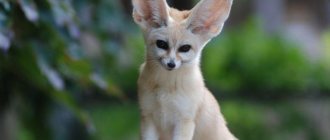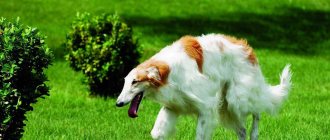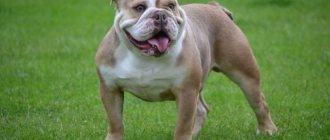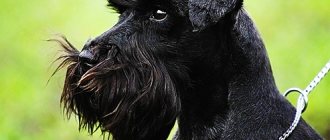What is this phenomenon
In simple terms, crossbreeding is the mating of two representatives of different breeds. This approach to breeding is used when there is a need to improve breed characteristics or breeders want to get a new one. The result of selection work is offspring that have greater strength, endurance, and also have a better ability to reproduce. The following characteristics are improved: vitality, endurance, working qualities, adaptation.
The increased endurance and vitality of some representatives and the poor similar performance of others can be explained by their biological nature. As a rule, long-term purebred breeding leads to a deterioration in breed characteristics over time. The best representatives of the offspring obtained as a result of this method are selected for breeding purebred individuals of the new breed. As a result of crossbreeding, the puppy receives mixed gene pairs: one from the father and one from the mother in each pair.
Today, there are several ways of crossing dogs of different breeds, but a successful result depends on a number of factors: proper care and maintenance that contribute to the development of certain desired qualities, the correct choice of the dominant (possessing more advanced qualities) base and the selection of optimal parents.
Wolfdog of Saarloos
The breed originated in the Netherlands by crossing a German Shepherd and a wolf. The breed has a proportionally built body, weight about 40 kg, and a height of 60 - 75 cm. They have a head shape like a wolf, medium-sized erect ears, yellow eyes, the fur fits tightly to the body and has a dark gray or brown tint.
The Saarloos wolf dog is a service breed; it lives according to the laws of the pack and recognizes its owner as a leader without prior training. Although these animals are independent, they become somewhat attached to their owner. They follow their instincts to stay at a safe distance from possible threats emanating from people or animals; they will never attack out of fear or out of fear. These animals cannot bark, but only make wolf-like howls.
Saarloos dogs are used in European countries as guide dogs and in rescue work. The wild instincts characteristic of the breed limit the use of these dogs as service dogs.
Main types
The choice of the type of crossing is influenced by the goals and objectives that the breeder sets for himself. The quality and correct choice of sources are important. The following types of crossing are distinguished: absorption, introductory, reproductive (factory), industrial and variable.
Introductory
It is used when the breed meets all the requirements and has all the necessary qualities, but there is a need to improve them. To obtain the desired result, dogs are crossed in several stages:
- The breeding stock of the improved variety is crossed with a representative of the breed selected to improve the original. The compatibility and compatibility of parents is important.
- The second generation crossbreed is mated with a purebred representative of the breed being improved. In this case, only representatives with clearly expressed desirable characteristics are selected.
- Breeding crosses among themselves.
Factory
This species is also called reproductive. In the process of this method, representatives of several breeds are used for breeding. A new breed is created by crossing crosses that meet all the stated selection goals. As a result of this breeding method, the required qualities and characteristics are developed.
Local aboriginal representatives who are well adapted to environmental conditions are chosen as the mother base. Other breeds are selected based on the qualities that need to be obtained, but which are not in the source being improved. Large breed differences give more chances for the appearance of completely new qualities, but it is not easy to consolidate them. In more similar mixtures, such qualities are established more easily and quickly.
As a rule, factory crossing consists of several components:
- A model of the offspring that breeders want to obtain in the end is being developed.
- Initial representatives are selected.
- Crossing crosses with each other. Genetic enrichment. There may be a “flush” of blood from another breed.
- Severe culling of offspring.
Industrial
The main goal of this type of reproduction is to obtain offspring suitable for a specific purpose. For this purpose, only the first generation of offspring is used. This choice is justified by heterosis, which consists in the fact that the first generation of crossbreeds has improved, more developed parental qualities.
For this method, only purebred representatives are selected. Requirements for crossed individuals: high degree of productivity and compatibility. Uteruses must be adapted to local conditions. Manufacturers are subject to higher quality requirements.
Variable
A type of industrial crossing, in which purebred mothers of the source and offspring mixtures are mated with sires of different breeds, the number of which is not limited. In this case, the heterosis effect is continuously maintained, which allows the crossbreeds to be used more productively.
Features of hybridization of the domestic dog. — Sulimov K.
* By the concept of “hybridization” we mean interspecific crossing of a domestic dog with a wolf, coyote and jackal, as well as the latter with each other, as well as inter-subspecies, for example, the Asian subspecies of the jackal (C. a. aureus) with the European (Camoreotikus) or African (Caalqirensis) ), if this took place, and intraspecific, interbreeding of dogs is referred to as the so-called “crossbreeding”, which produces mestizos of specific breeds.
In Charles Darwin’s work “Changes in Animals and Plants in the Domestic State,” the section on the origin of the domestic dog provides data from long-term observations of changes in European dog breeds as they settled with humans throughout the inhabited land. Left to their own devices, literally after a few generations they become convergently similar to local canid species, even if they do not always belong to the same genus Canis. Darwin interpreted this feature as a normal adaptation of a domestic species to a new habitat, without excluding the possibility of hybridization of dogs with local species of wild canines. The validity of this opinion is confirmed by numerous hybrids of a dog with an ordinary wolf (Canis Lupus), a coyote (Canis latrans) and other wild animals belonging to the same genus. However, not only among the general public, but also among professional dog handlers, there is still an opinion about the possibility of hybridization of a domestic dog with more distant relatives belonging to a different genus. For example, attempts to cross Spitz with fox and other small species of the Canidae family that do not belong to the genus Canis continue to this day. Experimenters are inspired by observations of similar, interspecies ones. and even intergeneric (albeit unsuccessful) matings of dogs with various species of the canid family in zoos. It should be taken into account that there the formation of such “mixed marriages” is facilitated by imprinting (the formation in the early period of development of stable selectivity to external stimuli, thanks to which the cubs recognize an inflatable ball as their mother, and the puppy considers you to be its dog parents), which occurs in young animals of different species when they are together growing. Animals perceive their peers as full-fledged brothers - members of the same pack, whom they have known since birth, which is the only reason why they are embarrassed by such a clear difference in appearance. Without imprinting, even belonging to a common genus does not always allow natural crossing of its wild relatives with a dog. If there is an external resemblance of some dogs to the species with which the experimenter plans to cross them, then with comparable sizes we can count on them adequately perceiving each other as partners. An example of this is the hybrids of a dog with a wolf and a jackal, obtained at the Kiel Institute for the Study of Domestic Animals (Germany) by mating a female wolf with a large royal poodle, and a female jackal with a medium poodle. So far, practice has confirmed that only five species of the genus Canis can be real partners of the domestic dog by crossing along with the dingo (Canis familiaris): the wolf jackal (Canis lupaster), the coyote (Canis latrans), the Mexican red wolf (Canis lupus) and the common jackal (Canis aureus algirensis G) with Spitz-shaped males that had dimensions close to the habitus (external appearance) of a jackal.
Long-term isolation of the dog and non-participation in reproduction with wild progenitors led to the divergence of their characteristics to the species level. But since wild representatives of the genus Canis remain the guardians of characteristic characteristics for the domestic dog, humans periodically “add” wild blood to it, most often from a wolf, with which the practice of dog hybridization is most closely associated. Therefore, it is no coincidence that in the genome of a dog (a set of genes representing the characteristics of a given species, not an individual), the genetic material of the common wolf prevails over the material of its other ancestors. The Central Asian Shepherd Dog, used as a fighting breed, did not have the opportunity to interbreed naturally with the large timber wolf living to the north of it. range, but the ancestors of this breed undoubtedly descended from large, rather than small foot and desert subspecies of the wolf. Unfortunately, representatives of this breed did not inherit the agility of their wild relatives, whom they are not at all afraid of when meeting in nature. Perhaps the faster Caucasian Shepherd is not devoid of genetic material from local wolves that live in mountainous areas and are of average size for the species.
BLOOD OF WILD ANCESTORS Arctic sled dogs even in the time of A. Brem were similar to local wolves, and the German shepherd is even “oversaturated” with wolf genetic material, as S.N. Bogolyubsky draws attention to. At least three breeds of working dogs were bred in the last century in Europe on the basis of the German shepherd crossed with the common wolf: the first was the Saarlooswolfnond in Holland, the second, carrying about 25% of the genetic material of the wolf and called the "wolfdog", was bred Karel Kartl in Prague, the third was received in Italy. These new breeds have retained wolf-like behavioral traits that are unusual for dog breeders dealing with ordinary German shepherds, so their use is not yet in demand by the law enforcement agencies for which they were created. Czech police officers from the search dog breeding do not like the wolfdog because he runs “too” quickly on the trail of the offender, creating a big burden for the counselor. At the same time, they try to slow down the speed of the dog following the scent by weakening its “upper sense”, which is fraught with its general weakening.
However, the main obstacle to the use of wolf-canine hybrids is not their excessive activity, but their inherent anthropophobia (extreme distrust of people). As the work of L.V. Krushinsky has shown, its strength increases when wolves are crossed with dogs that have increased excitability. Superimposed on anthropophobia, inherent not only in the wolf, but also in most other wild animals, the dominant sign of high excitability in the first generation of hybrids (and crossbreeds of natural breeds with hatchery ones) strengthens it many times over. This circumstance, naturally, discourages experimenters from continuing the reproduction of hybrids, which does not allow obtaining individuals with the required recombination of traits. Therefore, in order to weaken the anthropophobia of savages already in the first generation of hybrids, it is advisable to cross dogs with balanced nervous processes only with those representatives of the test species who have already passed preliminary selection for tameability.
According to American zoologists, out of 11 individuals of Canadian wolves, only one is tamed. Apparently, this indicator depends on the intensity of human persecution of animals in a given area. Thus, in the common jackal, the European subspecies is the most anthropophobic (after all, the density of human settlement in Europe is very high), and the least is the African subspecies (since the anthropogenic pressure there is much weaker than in Europe or Southeast Asia), which is why the latter had the most cases of interbreeding with a pet dog. The Asian jackal can also be bred with a dog, but this requires that the future partners grow up together, and out of six Asian jackal puppies, only one, usually the largest, is tamed.
THE DOG BOND OF THE HYMENEUS And yet, despite the problem with anthropophobia, the use of wolves and other species for crossing with dogs is constantly practiced, especially since already from the second and third generation the hybrids have individual individuals free from anthropophobic behavior. You should not just lose sight of the fact that when backcrossing with a dog, some undesirable canine traits return, which greatly complicate the main breeding task - to preserve in hybrids those useful qualities for which they were once bred. According to P.A. Manteuffel, the Australian dingo (Canis familiaris dingo), being a natural breed in the status of a subspecies of domestic dog that has most fully preserved valuable characteristics, with a still minimal manifestation of anthropophobia, can serve as a promising object for crossing. At the same time, in this dog, the dominant trait of anthropophobia arose and developed to the level inherent in pariah dogs. Moreover, this happened right before the eyes of one generation of colonists, who began to persecute dingoes as an enemy of the sheep population. Mixed dingoes with hounds and hunting huskies, according to Manteuffel (a passionate hunter with hounds), at one time were distinguished by such universal working qualities and psycho-motor data that no other representative of the canids of the Old World has.
Using dingoes, with the participation of collies and other European herding breeds, the best of modern shepherd dogs was bred in Australia, the inclinations of which were noted by Charles Darwin in dingoes trained by local farmers. Like a genetic donor wolf, which returns to its hybrids with a dog the characteristics lost during factory breeding, the common jackal of the European subspecies (Canis aureus moreoticus G) also helps, when crossed, to restore many of the lost useful characteristics. At the same time, hybridization of a dog with this subspecies sometimes leads to the formation of unexpected characteristics that have not been found in nature for a long time, which arouses keen interest among paleontologists. The characteristics of the jackal, as a subtropical predator-gatherer that does not experience any particular inconvenience from sudden changes in seasons and temperature fluctuations, which do not in any way affect the acuity of smell, were also evident in its hybrids, which made it possible to use their unique capabilities in forensic odology (the so-called industry exploiting the olfactory capabilities of animals). A keen sense of smell as a homozygous trait when crossed dominates over a weakened one representing a recessive trait (a deleted trait in highly specialized breeds, for example, in some hunting dogs). One can cite a typical case with a four-month-old puppy of a half-bred jackal-dog hybrid, which clearly illustrates the above. The smell of a bird came from a still fresh corpse. half-fledged domestic pigeon chick. tightly wrapped in the form of a mummy in several layers of cotton fabric and also wrapped in cotton and flannelette blankets. Apparently, this bundle belonged to children who decided to bury the bird with dignity and honor. Then one of the adults intervened in the funeral ritual and threw the dangerous toy into the impassable weeds, where it hung on the wormwood bushes (note an important point - the strong-smelling wormwood can drown out any smell). The puppy, having fully demonstrated his olfactory and search abilities as a scavenger, inherited from the jackal, picked up the smell in hot, windless weather from a distance of 60 steps, easily found the package and pulled it out of the weeds. In another case, the same puppy, on a walk in the area (where many other dogs were constantly walking), found someone buried at a depth of 15-20 cm four legs of a domestic rabbit. All dogs usually react positively to such a delicacy, so it is obvious that except for the puppy, no one was simply able to smell the delicacy buried at such a depth.
FROM THE LIFE OF QUARTERONS After 7 years of working with jackal-canine hybrids obtained from crossing the European subspecies of jackal (Canis aureus moreoticus G) with the help of individuals carrying 25% of the jackal’s genetic material and called “quaterons” by us, three males and five females were selected. Quaterons, in terms of their sense of smell and other working qualities, exceeded the wildest expectations of specialists who had previously worked with German shepherds. Of particular interest to criminologists was their ability to distinguish the sex of a person by smell, and they can differentiate between male and female scent marks with a half-hour difference in their formation. This interest is explained by the fact that, according to statistics, only 15% of crimes in our country are committed by women, but therefore the presence of traces of women at crime scenes theoretically reduces by 85% the circle of persons suspected of involvement in the crime, which simplifies their search. Ordinary domestic dogs turned out to be practically unsuitable for such odorological analysis of human traces.
The size and physique of all reciprocal jackal-canine hybrids (the scope of this article does not allow us to explain the features of reciprocal crossing), obtained from crossing with crossbreeds of the reindeer husky. not distinguished by homogeneous exterior features in the first generation were extremely even. If wolf-canine hybrids, as a rule, are always inferior to the wolf in some way (in size, strength, etc.), then jackal-canine hybrids are. On the contrary, they turned out to be larger, physically stronger and stronger than the jackal. A hybrid bitch with 28% jackal genetic material demonstrated the ability to reason with a male German Shepherd three times the size of an attacker who attacked her like a wild animal. The male knocked the bitch off her feet, without even paying attention to her gender or the characteristic signs of a nursing mother, and injured her forelimb. However, the bitch found it possible to grab the dog where it was - by the nose. Having released the attacker, she demonstrated with all her appearance such readiness to repel any repeated attack that the dog was forced to shamefully retreat with serious wounds on his face, which had to be treated by a veterinarian.
It’s not just psychomotor skills that amaze the imagination. but also the strength of the skeleton and ligaments of the first generation jackal-dog hybrids. One female of these hybrids, having jumped from a 5th floor window, landed safely with all her limbs and, as if nothing had happened, disappeared from the scene. Soon she ran away from the nursery through a hole under the fence washed out by the pond, diving into the water to do this, which also demonstrated high extrapolation abilities for fairly high rational activity, characteristic of wild species. Her sister, named Zita, the ancestor of all subsequent generations of jackal-canine hybrids, at the age of six months, showed another ability, also not characteristic of dogs, by pulling out of her mouth a chicken bone stuck between the arcades of the teeth of the upper jaw from her peer, the reindeer-dog husky mix Daiki. . Dyka, after unsuccessful attempts to free herself from the bone and not being given into the hands of a person who tried to help her, froze with her mouth open in front of Zita, who busily climbed her sharp muzzle into her mouth, grabbed the stuck bone with her teeth and, pulling it out, ate it as the due reward for works. Hybridization, by removing various psychomotor limitations characteristic of dogs, allows “mixed breeds” to exhibit other qualities uncharacteristic of either dogs or jackals. For example, jackal-canine hybrids from the first to the third generation were distinguished by exceptional climbing abilities. A pair of quarter-blooded (jackal blood) hybrids climbed, jumped and walked along the edge of a two-meter fence with cat-like agility. And a hybrid male with 28% jackal blood, after the first unsuccessful attempt to overcome a three-meter fence to leave the nursery, quickly found a low area in it, but, hanging under a canopy of barbed wire, was caught. However, having remembered this place, he immediately took advantage of it, making a successful escape a month later, showing incredible extrapolation abilities.
However, when breeding half-blooded hybrids, “in themselves”, with each new generation they moved away from the original forms, showing more and more new characteristics that neither the known ancestors of the dog, nor, especially, the jackal had. At the same time, some individuals, significantly larger in size than the dogs participating in hybridization, resembled small wolves in size and size, while others barely reached the height of an average Spitz and resembled a raccoon dog. Some, regardless of size, were aggressive and constantly attacked their relatives, displaying wolf and jackal techniques in fights, which did not allow them to be used either for work or reproduction, while others, on the contrary, were so loyal to their partners and humans that There was no problem with them whatsoever.
Continuation. Let's leave endless debates about the origin of the domestic dog with scientists; we know only one thing for sure: over thousands of years, people have been “improving” the dog, developing in it certain useful qualities. It is impossible to get a universal dog, so the work was carried out in narrow areas: watchman, shepherd, hunter, etc. In parallel, Nature carried out similar work, and no less successfully. When Homo sapiens' head stopped spinning from his own success and he was able to look around more or less soberly, he immediately noticed that wild dogs had a number of qualities that far exceeded those of domestic breeds. You can argue as much as you like whether intelligence is a gift from God or an individual characteristic of a living organism that can be developed and fixed genetically in a breed, but the fact remains: the mental abilities of wolves, foxes or jackals are no lower than those of domesticated relatives of the most “intelligent” breeds . In this case, I put the word “intelligence” in quotation marks, meaning, first of all, the ability to form skills, which is always higher in wild animals. In addition, the excessive intelligence of four-legged animals is sometimes a hindrance not only in training, but also in service. Let’s not intrude on this controversial topic, since the question “Who is smarter, a wolf or a dog?” can be seriously discussed only in kindergarten along with other eternal questions, such as “Who beats up who - the boxer to the karateka, or the karateka to the boxer?” Wolves solve extrapolation problems faster, but there are many other tests and criteria by which one can judge an animal’s mental abilities. The same applies to physical data. You can breed the fastest greyhound by improving the speed and technique of its running, but at the same time it is not so easy to achieve locomotive harmony, the coherence of the work of all internal organs and mechanisms, so that the dog does not lose endurance, giving all its best at sprint distances, etc. That is why great breeds have been created for centuries, and successful ones (among modern ones) will take hundreds of years to be perfected. And during this fine-tuning, the blood of wild dogs will often be “mixed in.” Very interesting work in this direction on the hybridization of domestic dogs has been carried out in our country since the early 70s of the last century. Then, unfortunately, when less and less money began to be allocated for science, this program was curtailed. The unique methods and achievements of our scientists will undoubtedly still be in demand, it’s just a pity that time has been lost, and many experiments will have to start all over again. In the last issue, Candidate of Biological Sciences Klim Timofeevich Sulimov talked about the promising horizons that opened up for dog handlers after receiving the first quadroons - hybrids carrying a quarter of jackal blood. These animals inherited from their wild ancestors a fantastic sense of smell, amazing psychomotor skills and other advantages that could be fixed at the level of breed characteristics. In this issue, K. Sulimov continues the conversation about the peculiarities of hybridization of the domestic dog.
SHADOW OF THE JACKAL Without its main shelter nearby - thickets or thorny bushes, the jackal can successfully hide from the enemy by burying itself in loose soil. Some of the jackal hybrids also resorted to the same method in appropriate situations. All of them differed from dogs in their exceptional “silence”, which allows us to hope that with the help of their genetic material they will finally be able to solve the problem of reducing the noise from barking dogs. So, if someone comes up with the idea of breeding a new “silent” breed specifically for densely populated “dormitory” areas, then the experience of hybridization with a jackal will come in very handy. Technically, hybridization of a dog with wild species of the genus Canis is often limited to crossing females of wild species with domestic dogs. Male jackals are much more demanding of a partner, so it is much more difficult to attract them to hybridization (in the last issue it was discussed in detail that they can perceive only some domestic dogs as equal representatives of their species, and then only if the jackal is in the process of imprinting with childhood, I recognized this particular bitch as a member of my family). Females of wild species are extremely susceptible to disturbance, so the presence of even familiar people in or near enclosures affects their behavior during the period when they perform maternal functions. As for anthropophobia (extreme distrust of people), it is largely transmitted to offspring obtained from mating with domestic dogs.
The reciprocal crossbreeding option, which greatly facilitates the raising of hybrid puppies, is difficult due to a number of problems. First of all, this is the mating of “savage” males outside the mating season, which is limited to the period between the second ten days of February and the third ten days of March. This requires a reserve of domestic bitches for selection. In addition, as mentioned above, jackal males need imprinting to domestic bitches, which is carried out when raising jackal cubs along with puppies. This also requires a reserve of females, whose whelping would coincide in time with the whelping of female jackals. Visually determining the timing of mating in females of wild species and their hybrids based on mild changes in the external genitalia is also not easy. Therefore, it is more expedient to keep both females together with males, although this makes it difficult to accurately record matings. In addition, both wild species and hybrids differ from factory breeds of dogs in very strong sexual selectivity. In wolves, for example, aversion to mating partners artificially selected for them in the zoo sometimes ends in a fight between the animals with a fatal outcome. I remember one similar tragedy, when a male and female, located in the same enclosure, maimed each other so much that even experienced veterinarians could not save the latter. In my practice, there was another case: a jackal-dog half-breed of the second generation (the ancestor of all the generations of hybrids that followed him) constantly rejected the females offered to him “according to plan.” We were already despairing that he would ever make his choice and recognize the next “bride,” when he unexpectedly “set his eyes” on an unscheduled bitch, with whom the long-awaited mating took place. Such cases with jackals are not uncommon. Therefore, when breeding “savages” and their hybrids, there should always be a reserve for choosing crossing partners. The problems of breeding half-blooded hybrids of the first generation “in themselves” also lie in the fact that they, like the wild species, can maintain the same frequency of the mating season - once a year. But at the same time, their timing may shift by several months, and then the ability to mate of hybrid males with the narrow period of spermatogenesis preserved from the original species may not coincide with the empty nests of hybrid females. In such cases, in order to further reproduce females of half-blooded hybrids, it is necessary to resort to crossing them with domestic males. In this case, only 25% of the “savage” genetic material remains for the second generation hybrids. Continuation of the absorptive crossing of hybrids with a dog rapidly washes out the characteristics of the wild species in their gene pool, which disappear with such breeding already in the fifth generation.
THE MOST OLFRATORY ANIMALS The domestic dog inherited the acuity of smell and the breadth of perception of the odor palette from its wild relatives, but the specialization of its breeds led to inevitable losses in both the acuity and the range of perceived odors. For this reason, most of the old factory breeds, for all their advantages, are only relatively suitable for fine odorological analysis, searching for explosives, weapons, drugs and other objects by their odors, as well as for rescue work. Therefore, the common jackal, Arctic wolf, coyote and aboriginal dogs of the Arctic, which have not yet undergone narrow specialization, along with the dingo already used for these purposes [4, 12], represent valuable genetic material for crossings and breeding on their basis new breeds with increased olfactory acuity . However, for a number of reasons (related to security issues and economic difficulties), the widespread use of the wolf as a genetic “improver” of the sense of smell in new breeds being created is less justified than the use of the jackal for the same purposes.
The wolf, being an active hunter of large ungulates and mainly using only their fresh tracks, is less interested in old smells. The jackal does not neglect old tracks, since they can lead him to the place of a fallen wounded animal or to the remains of a meal of large predators, or even to the placenta left after birth in a large antelope or zebra, not to mention a giraffe, whose placenta is enough to satiate a whole family of jackals. The specialization of the jackal in feeding on the placenta of large ungulates and the lack of species-specific odor characteristics of sex in mammals created the conditions under which jackal-canine hybrids, inheriting the jackal’s sense of smell, turned out to be unsurpassed odor detectors for forensic odorology. In any case, only they were able to accurately distinguish females from males by smell.
Possessing more advanced search behavior than their domesticated relatives, jackal-canine hybrids obtained from crossing a jackal with an Arctic Spitz are also able to work beyond the temperature limits of ordinary dogs, i.e. significantly below -20°C. and above +30°C. German shepherds, as practice shows, are not able to work in this temperature range. In addition, quarter-blooded jackal-canine hybrids develop the necessary stereotypes in working with the individual scent of humans and animals much faster (often in one go) and more firmly than ordinary dogs. Showing more independence, they are less oriented towards uncontrolled ideomotor, visual and other non-signals emanating from the operator, or a person who is accidentally aware of the location of the objects under study [1] and unintentionally directs the dog to the desired object. In other words, a sniffer dog, which knows people very well, is guided in its search work by the invisible signals that come from them (fear, approval, irritation and a whole range of emotions), while the hybrid works strictly by smell.
... AND AGAIN ANTHROPHOBIA Crossing a dog with an Arctic subspecies of coyote (Canis iatrans incolatus) may also turn out to be more promising than hybridization with an ordinary wolf. The use of these hybrids represents a new direction in dog breeding, which has not yet received proper assessment for its development [13]. But the absence of these species in zoos in our country postpones the continuation of experiments with them until the time when they become ordinary exhibits there (let’s not lose hope that this will happen someday).
Anthropophobia in savages and many natural breeds of dogs is a serious obstacle to training; it is a polygenic and, in general, dominant trait. In combination with the increased excitability characteristic of most factory breeds of dogs (also a dominant trait), when crossed, they produce offspring that have an even sharper manifestation of fear of people in the first generation [10,11]. However, with targeted breeding work in subsequent generations, it is possible to obtain some individuals completely free from anthropophobia. Now their children can already acquire innate loyalty to a person, which will be fixed at the level of a polygenic, but recessive trait. Therefore, despite the problems associated with the inheritance of anthropophobia from savages and aboriginal breeds, intraspecific and interspecific crossing of dogs is justified. In any case, this opens up wide possibilities for breeding new breeds and rejuvenating old ones [13].
Literature. 1. Bekhtin I.N., Sulimov K.T. A dog crosses with a jackal. // Nature. 1985, no. 3. — P. 504-534. 2. Bogolyubsky S.N. Origin and transformation of domestic animals. M., 1959,-S. 504-534. 3. Brem A. Animal life. 15. - M., 1941.-S. 378-384. 4. Darwin Ch. Changes in animals and plants in the domestic state. M.-L., 1941. -S. 35-52. 5. Gerre V., Tsimen E. Puvo. // Nature. 1972, No. 5., pp. 95-100. 6. Gibet L.A. “The tragedy of the famous kennel” - “Hunting Dogs” No. 1 1998. P.24-29. 7. Korytin S.A. Methodology for studying the olphametric behavior of predatory mammals. Theriology. - Novosibirsk, 1972.-S. 341-353. 8. Korytin S.A. Some data on the olfactory orientation of mammals. //Issues of fur farming and commodity research.-MM 1971.-P. 207-267. 9. Korytin S.A., Azbukina M.D. Olfactory acuity in animals in different seasons of the year.// 2nd All-Union Meeting on Chemical Communication of Animals. - M., 1983. -S. 105. 10. Krushinsky L.V., Physiological foundations of behavior and training of dogs. // Service dog. - M.: Selkhozgiz, 1952. -S. 179-233, 11. Krushinsky L.V. Formation of animal behavior in normal and pathological conditions, M..1960.-P. 72-74. 12. Krushinsky L.V. Selected works. - M., 1991.-259 p. 13. Manteuffel P A Stories of a naturalist. - M., 1955.-176 p. 14. Rubailova I.G. Distant hybridization of domestic animals. - M., 1965. -265 p. 15. Sulimov K.T. Canine identification of an individual by olfactory signals. dis. for the job application uch. Art. Ph.D., - M., 1995. 16. Lilly JR, Puckett M.V. Social control and dogs: A sociohistorical Analysis. // Crime and Delinquency, USA, 1997, Vol.43, No. 2. April.- Pp.123-147
Klim Sulimov, Candidate of Biological Sciences, member of the scientific coordination council for domestic dog breeds of Russia at the Russian Institute of Cultural and Natural Heritage, leading researcher at the Research Institute of Cultural and Natural Heritage of the Ministry of Culture of the Russian Federation and the Russian Academy of Sciences. Photo by the author. “Friend” No. 5-6 – 2003
Who is called mestizo?
You can often hear the expression “mixed breed of dog.” This is not entirely true, since a mestizo is a mixed breed or half-breed resulting from the crossing of representatives of different breeds. Crossed individuals can balance and complement each other's qualities, but the result can sometimes be unpredictable.
One thing is true: mestizos usually have excellent physical health, a high degree of productivity and a stable psyche. They are easy to train, but their inherited personality traits may surprise the owner. But the fact that these are not purebred individuals does not mean that they do not need proper care and maintenance.
Of course, everything depends on the source breeds. Sometimes mestizos are born from mixed pairs of parents (pedigree and mongrel). The great advantage of such dogs is that they do not inherit genetic diseases of their parents.
Video "Dog Mating"
In this video you will learn about the nuances of dog mating.
Recommended Posts
The best hunting helpers: TOP-30 hound dog breeds with names and photos
Review of 8 super premium dog foods
Review and description of 5 premium dog foods
What nickname to choose for a large breed boy's dog
Instructions for Parasitel suspension and tablets for dogs
Description and varieties of Laika dogs










